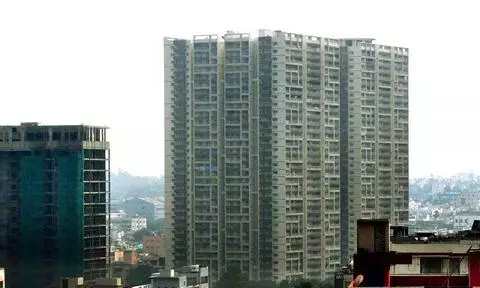Heat is on, blame high-rises
The unchecked FSI policy has fuelled real estate growth but at the cost of intensifying Hyderabad’s UHI effect

Hyderabad: The surge in high-rise constructions in the city, particularly in Gachibowli, Madhapur, and Kokapet, thanks to the relaxed floor space index (FSI) policy, is significantly contributing to the ‘urban heat island (UHI)’ effect Hyderabad.
The core urban areas are 1.9°C warmer than peri-urban areas due to trapped heat (heat retention) by high-rises and dark roads.Peri-urban areas cooled by 12.3°C at night while it was 9.7°C in the city core areas.
Hot nights pose severe health risks by preventing recovery from the daytime heat, causing prolonged bodily stress due to more urban heat island effects in the night.
The growing intensity of UHI effects in Hyderabad and other urban areas was highlighted in the socio economic survey report tabled in the recent Assembly session, which referred to the ‘Urban Heat Stress Tracker-Hyderabad’ published by the Centre for Science and Environment (CSE).
Increasing green infrastructure by expanding tree cover, rooftop gardens, and reflective building materials can mitigate UHI effects by lowering surface temperatures. Wider streets, better ventilation designs, and preservation of water bodies and having more open spaces are other ways to counteract heat stress caused by urban canyons.
The unchecked FSI policy has fuelled real estate growth but at the cost of intensifying Hyderabad’s UHI effect. The FSI, ranging from 6 to 13, is far above the national average of 2 to 2.5. The GHMC has approved 74 high-rise residential structures and several commercial towers in 2023-24.

